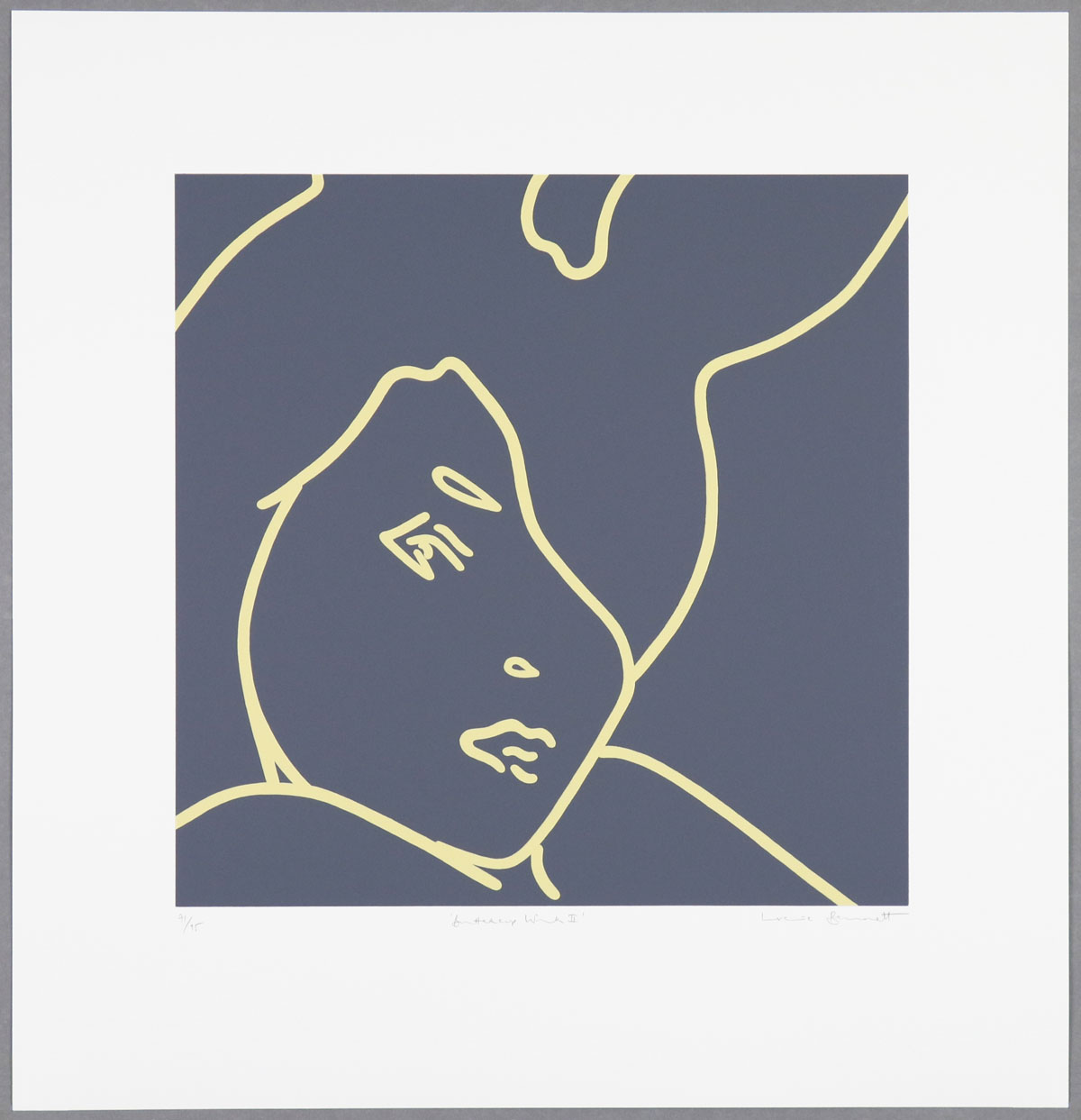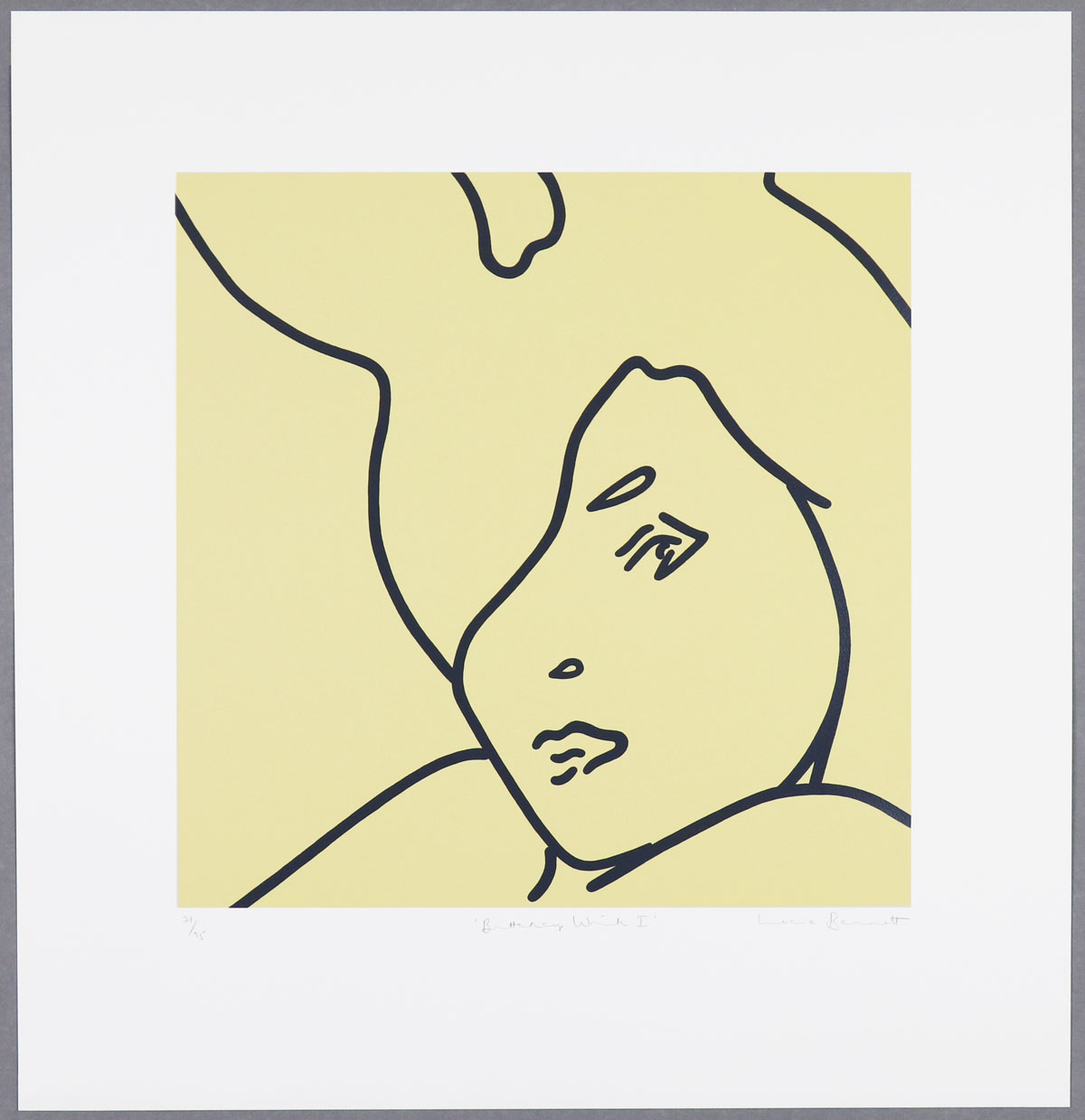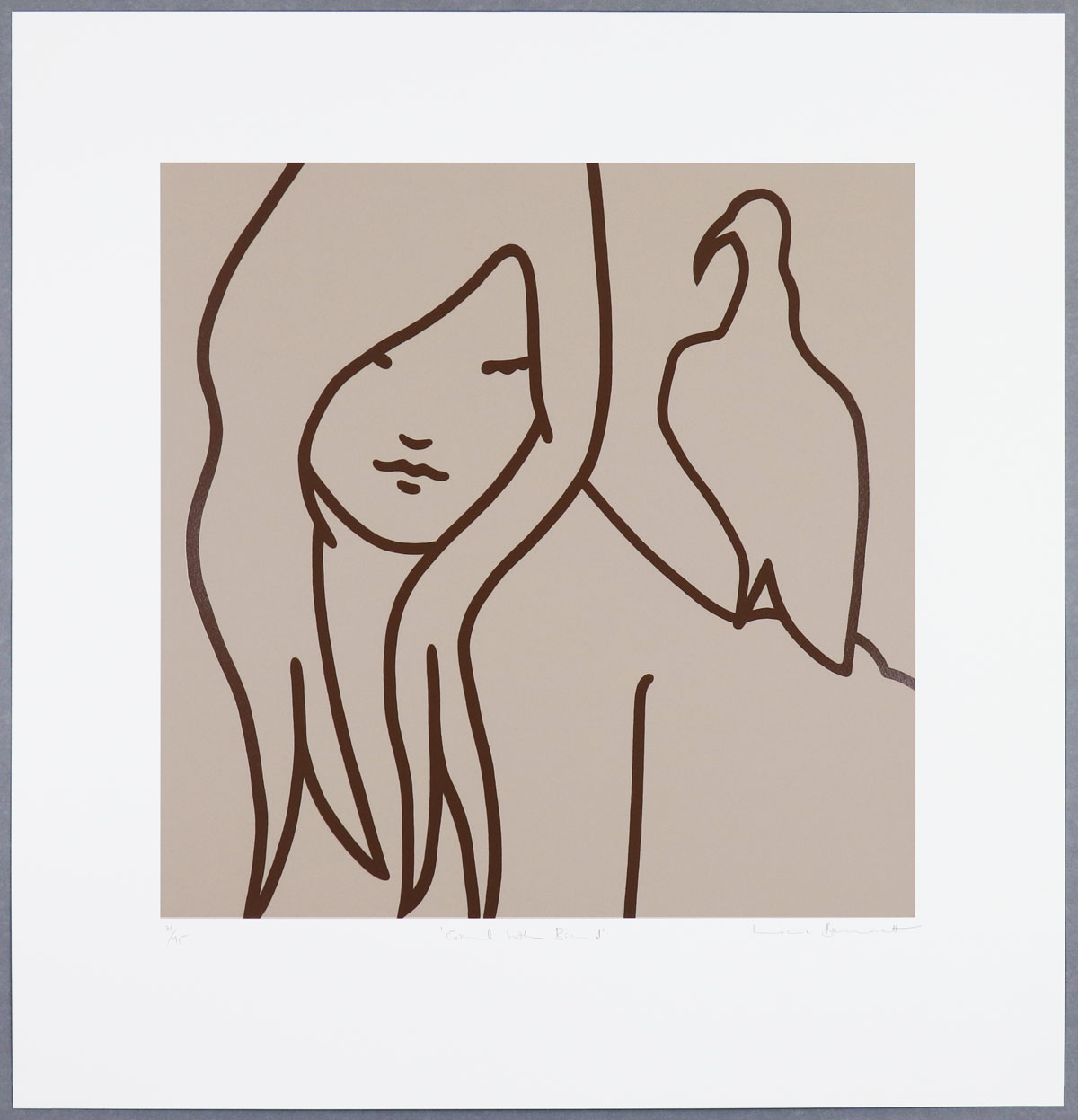For two decades, British artist
Lucie Bennett has been admired for her delightful lines delivered with confidence and economy, depicting the seductive contours of the female figure. From her first paintings, the artist has developed a practice across several themes arising from female imagery, objectification and sexuality - and a connection with mother nature through floral forms. The subject matter of the three works
Buttercup Wink I and II and
Girl with Bird from 2005 represents a closure of an important period in Bennett’s artistic career; a time where she moved from being provocative and explicit in her visual language to a more sophisticated and aesthetic form.
First emerging as an artist at the turn of the millennium,
Lucie Bennett’s work has developed notably over the past twenty years. Her early exploration of female imagery in the public space - including a young and sassy attitude - led to works which were provocative, seeking to push boundaries, and adding to a conversation on the objectification of women. A young woman on all fours on the floor in a short skirt; a female in high-heels with a gun in a kneeling pose; a uniformed girl in skimpy shorts in a striking pose in a jungle scene; or a standing teenage girl in a nightgown holding a toy bear.
This body of work, stretching over five to seven years from the end of the nineties, is an important study to utterly understand Bennett’s practice. How the artist gradually and artistically reached the minimal linear work, released in the decade hereafter and admired today by countless fans, is unfortunately and frequently forgotten while being seduced by Bennett’s gracefully flowing lines.

LUCIE BENNETT
Buttercup Wink II, 2005
Edition of 95
20 Artist Proof (APs)
66(w) x 68(h) cm
25.98(w) x 27.01(h) inches

LUCIE BENNETT
Buttercup Wink II, 2005
Edition of 95
20 Artist Proof (APs)
66(w) x 68(h) cm
25.98(w) x 27.01(h) inches
|
|
|
66(w) x 68(h) cm
25.98(w) x 27.01(h) inches
|
Screenprint on Somerset satin paper.
Image size: 18 x 18 in
Signed, titled and numbered on front.
Edition of 95
|
|
Bennett’s process starts by her making graphite sketches on paper reviewing different poses to achieve the desired composition. With a keen eye she uses her own memory and body as reference, whilst maintaining the work and narrative is not necessarily autobiographical. Gradually the silhouette outline and colour palette are perfected, her esteemed and unique single-line applied with consistent width on the chosen medium, such as aluminium or paper.
In
Buttercup Wink I and
Buttercup Wink II the artist further explored some of the influences comprising female uniforms - and self-confident and flirtatious women. In Bennett’s characteristic silhouette line, the face and shoulders of a woman are shown with her posture suggesting she is sitting up straight with her arms crossed in front of her, pushing up her shoulders. Her voluminous hair extends into a shape that hints the ears of a rabbit - an appearance with clear references to the Playboy bunny, down to the pose.

LUCIE BENNETT
Buttercup Wink I, 2005
Edition of 95
20 Artist Proof (APs)
66(w) x 68(h) cm
25.98(w) x 27.01(h) inches

LUCIE BENNETT
Buttercup Wink I, 2005
Edition of 95
20 Artist Proof (APs)
66(w) x 68(h) cm
25.98(w) x 27.01(h) inches
|
|
|
66(w) x 68(h) cm
25.98(w) x 27.01(h) inches
|
Screenprint on Somerset satin paper.
Image size: 18 x 18 in
Signed, titled and numbered on front.
Edition of 95
|
|
Of all the delightful inhabitants of the natural forest, the rabbit seems to be the creature associated with allure and sexuality. Hugh Hefner, the legendary founder of Playboy Magazine and behind the world’s second-most famous bunny after Bugs Bunny, was repeatedly asked that question when interviewed. The rabbit, or bunny, was the obvious choice for him: it came across as fresh, vivacious, humorous - and full of sexy bouncy energy.
The artist’s bunnies in
Buttercup Wink are visually not far from Hefner’s and use the recognised uniform of the Playboy bunny to make a quick association to sexuality. Unlike the conceptualised playboy-bunny, Bennett’s females possess a mysterious and real-life quality to them, seemingly open and aware of the inevitable game of temptation and seduction. However, such fantasy may be contradicted entirely by the title ‘Buttercup Wink’, which has a much more rounded connotation of “cute” or “sweetheart wink”. Bennett leaves the viewer wondering what the larger story might be.

LUCIE BENNETT
Girl with Bird, 2005
Edition of 95
20 Artist Proof (APs)
71(w) x 73(h) cm
27.95(w) x 29.02(h) inches

LUCIE BENNETT
Girl with Bird, 2005
Edition of 95
20 Artist Proof (APs)
71(w) x 73(h) cm
27.95(w) x 29.02(h) inches
|
|
|
71(w) x 73(h) cm
27.95(w) x 29.02(h) inches
|
Screenprint on Somerset satin paper.
Image size: 20 x 20 in
Signed, titled and numbered on front.
Edition of 95
|
|
Girl with Bird is a third work on paper from the same series. Here, a girl is sitting, leaning forward, her back arched and her hands placed on the ground. The long hair is flowing down the shoulders and her head is turned towards the bird, sitting on her back. Though the silhouette of the bird is similar to a small vulture, with its hooked beak and long featherless neck, there is no sense of unease between the two, in fact the relationship seems symbiotic; a ‘spirit animal’ representing a part of her nature.
Girl with Bird sits among the artists more whimsical and sensuous bodies of work - and one that explores the relationships between women, human nature and the natural world; an ongoing theme in Bennett’s practice. The work is sensual with a warm colour palette of a light and dark cinnamon-wood.
Amid the success of
Lucie Bennett’s work in the early noughties, Eyestorm released ten print editions in collaboration with the artist in 2005. Two of them titled
Buttercup Wink I and
Buttercup Wink II are presented in a lemon-peel yellow and harlequin grey in an inverse colour scheme with a mirrored composition. The three works on paper, including
Girl with Bird, are each editions of 95, manually screen-printed and signed, titled and numbered on front. Since the release of the first print edition and during the following fifteen years, a further 27 exclusive editions have been released in a variety of mediums such as paper, neon and plastic-acrylic.
You can find more details and information about the above three print editions by
Lucie Bennett on her artist page
here.